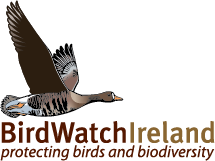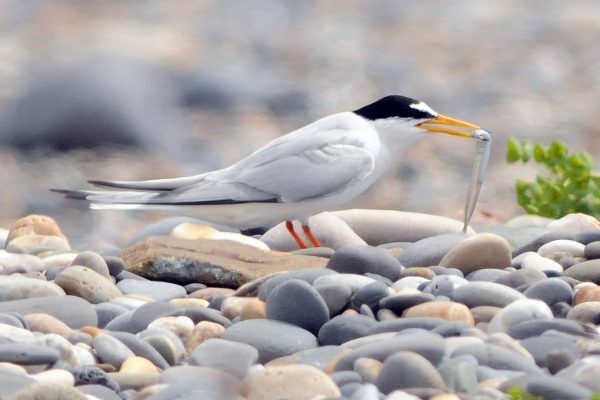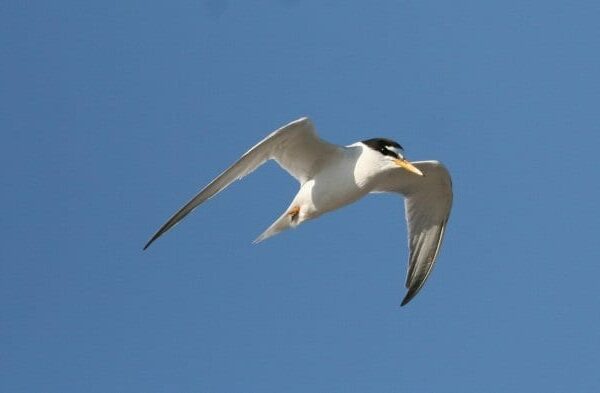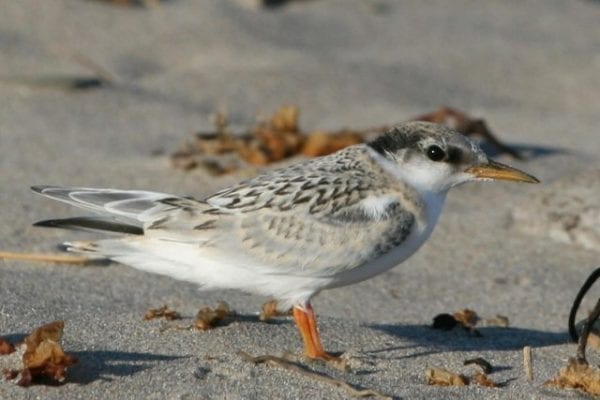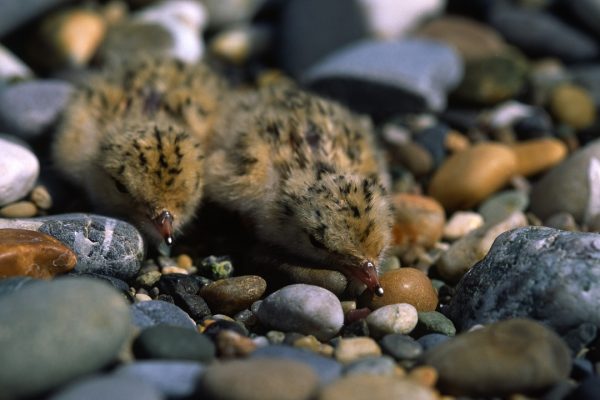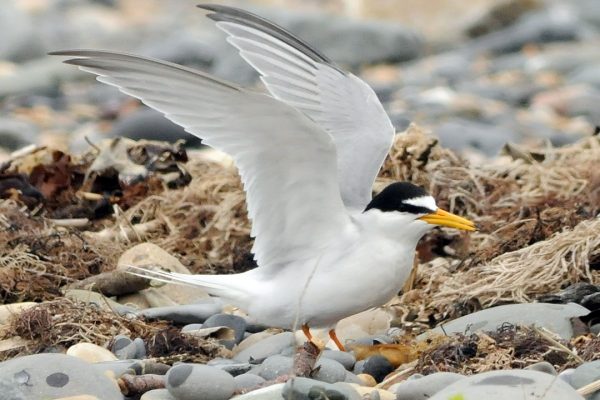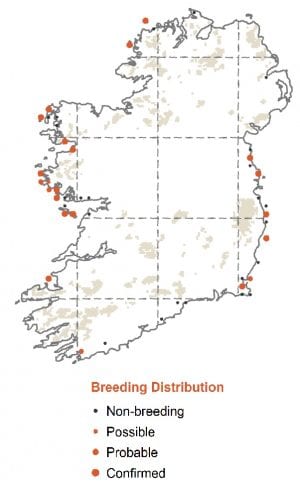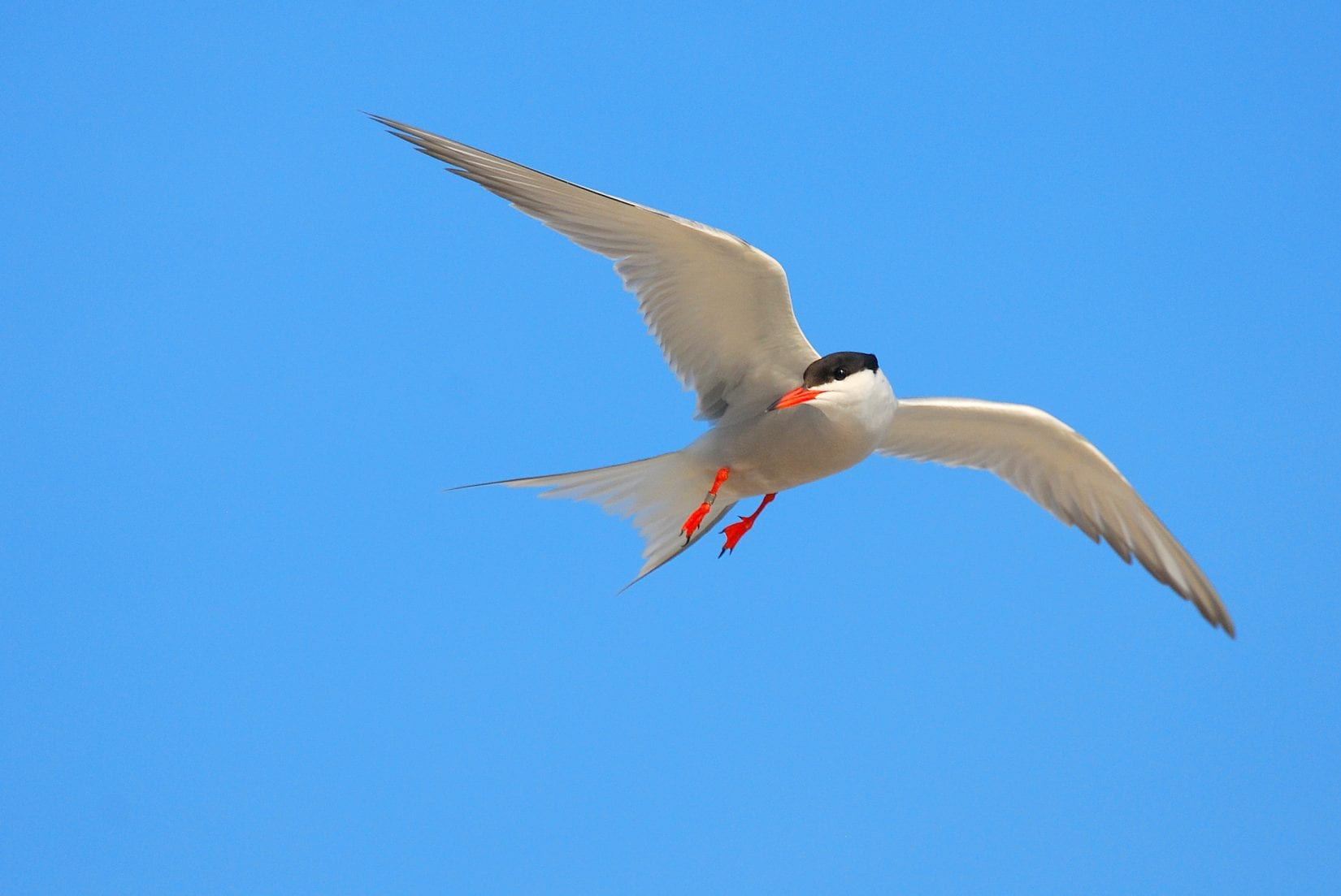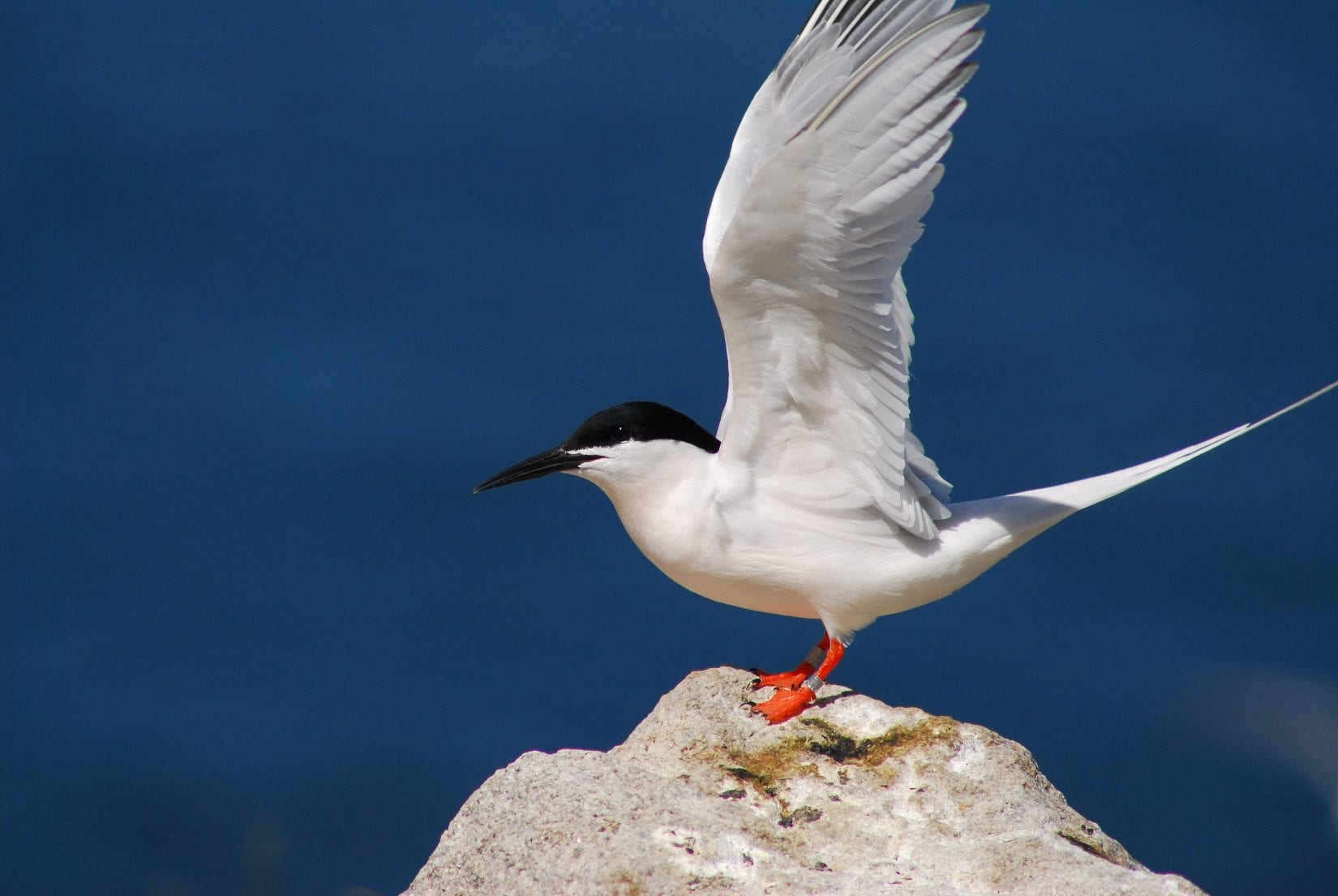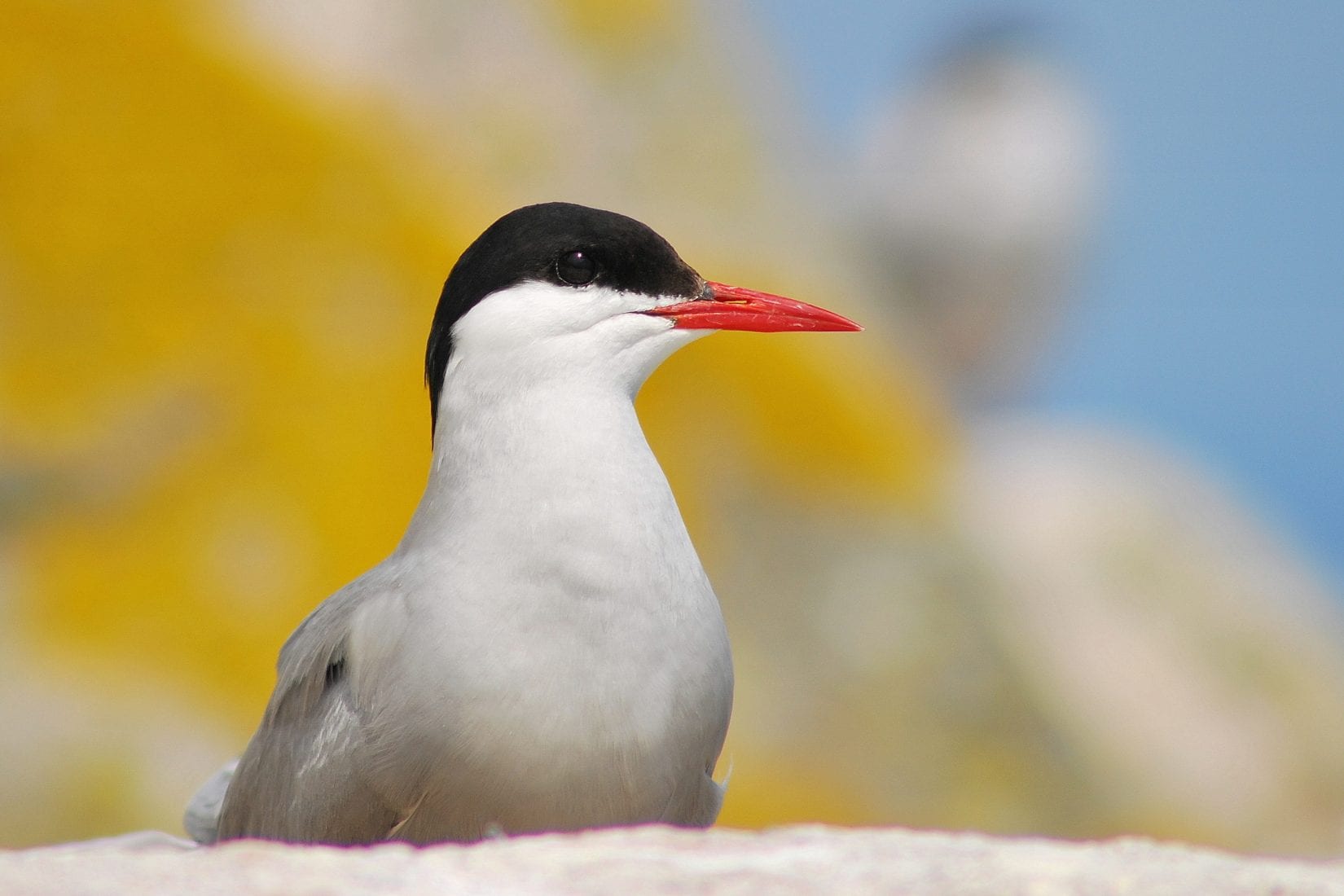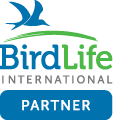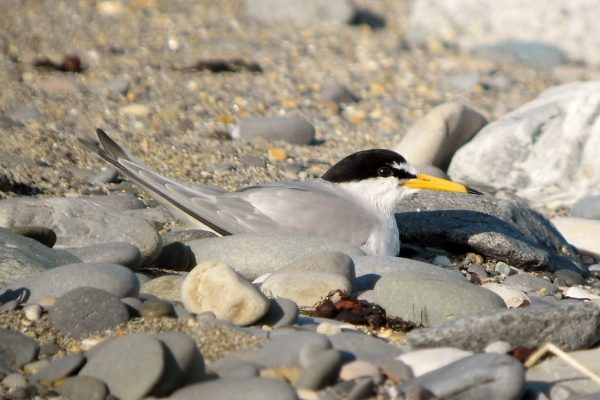
Little Tern
| Irish Name: | Geabhróg bheag |
| Scientific name: | Sterna albifrons |
| Bird Family: | Terns |
amber
Conservation status
Conservation status
Status
Rare summer visitor from April to late August to shingle or sandy beaches, mainly on the east and west coasts.
Identification
The smallest of the terns breeding in Ireland. Small slender seabird with narrow, pointed wings, long forked tail and long, pointed bill. Grey above and white below, dark cap to head, white forehead in all plumages. Flight is light and buoyant, hovers rapidly while foraging over the sea before repeatedly diving in. Has a dark leading edge to the primaries of its long narrow wings. Adult summer bird has long yellow bill with black tip. In winter plumage the white of the forehead extends up over the fore crown, the legs darken and the bill is all black. Juvenile plumage is distinct from the adult with dark bill, barred mantle and dark upper forewing.
Voice
Sharp, rasping and repeated.
Diet
Chiefly marine fish.
Breeding
Nest colonially on the ground on shingle beaches, making them very vulnerable to poor weather and ground predators. Only a few colonies are found in Ireland, with the majority breeding in Counties Louth, Wicklow and Wexford.
Wintering
Winters in coastal areas in western Africa.
Monitored by
BirdWatch Ireland has been monitoring and protecting breeding Little Terns at Kilcoole beach (Co. Wicklow) since 1985. In addition, the BirdWatch Ireland Fingal Branch have a Little Tern conservation project at Portrane (Co. Dublin), and BirdWatch Ireland partner with Louth Nature Trust to protect the Baltray (Co. Louth) colony.
Blog posts about this bird
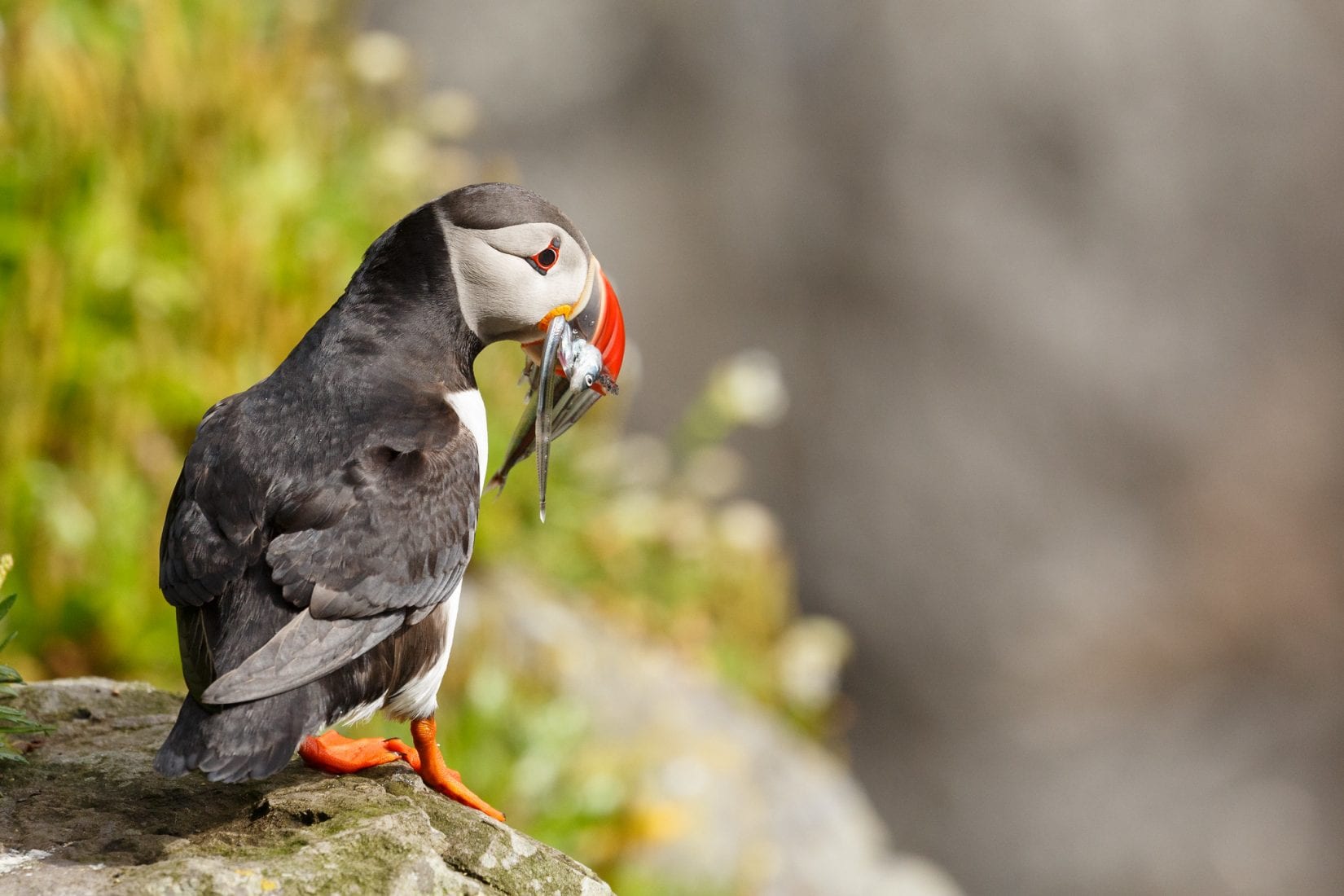
New protected area off Wexford coast is a step forward for vulnerable seabirds
The recent announcement of the new “Seas off Wexford” Special Protection Area (SPA) is certainly news to be welcomed.
For such a designation to be as effective as it can be, it is crucial that strong and effective conservation objectives and management plans are ambitious and that stakeholders are consulted throughout the process. It would be most welcome if the designation of new marine SPAs also led to a new vision for management of Ireland’s entire network of SPAs. BirdWatch Ireland calls on government to ensure that management plans are put in place for SPAs on both land and sea and that a whole-of-government approach is taken to implement them properly to safeguard the future of the birds they are intended to protect.
Minister for Housing, Local Government and Heritage Darragh O’Brien recently designated the new SPA of marine waters off the coast of Wexford which, at over 305,000 hectares, is the largest SPA designated in the history of the state. These waters provide extremely important food sources for seabirds, including Red-listed species such as Puffin, Kittiwake, Common Scoter and many other vulnerable Amber-listed species such as Fulmar, Manx Shearwater, Shag, Cormorant, Black-headed Gull, Lesser Black-backed Gull, Herring Gull, Roseate Tern, Red-throated Diver, Gannet, Common Tern, Little Tern, Sandwich Tern, Mediterranean Gull and Guillemot.



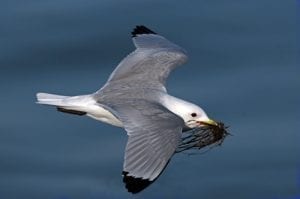
Kittiwake. Photo: Colum Clarke.
Under EU legislation, the Irish government has made a commitment to designate 10% of its waters as protected by 2025, and a total of 30% by 2030. This new designation increases the percentage of Ireland’s marine protected waters to 9.4%, just under the 2025 target. While this is certainly a step in the right direction, many questions remain, primarily, what will “protection” look like in practice? It is paramount that this is made clear in the soon-to-be-published SPA’s conservation objectives, which should detail the activities that will and will not be permitted in the SPA, among other measures. We look forward to reading them shortly. At the same time, BirdWatch Ireland in collaboration with BirdLife Europe and BirdLife International are mapping Ireland’s marine Important Bird Areas according to international and standardised BirdLife International criteria under a project funded by the Flotilla Foundation. This is an important time for our seabirds and it is welcome to see the government’s focus finally on setting out protected areas for them.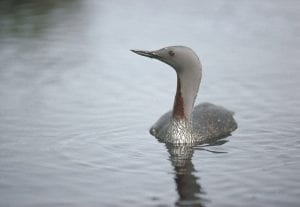
Red-throated Diver. Photo: Chris Gomersall
While the finer details about the Wexford SPA have yet to come to light, it is clear that certain activities will not be permitted in the Wexford SPA. The Minister has issued a Direction in relation to certain activities, which must not be carried out within or close to the SPA, unless consent is lawfully given. The listed activities are reclamation including infilling; blasting, drilling, dredging or otherwise disturbing or removing fossils, rock, minerals, mud, sand, gravel or other sediment; introduction or reintroduction of plants or animals not found in the area; scientific research which involves the removal of biological material; any activity intended to disturb birds; undertaking acoustic surveys in the marine environment and developing or consenting to the development or operation of commercial recreational/ visitor facilities or organised recreational activities.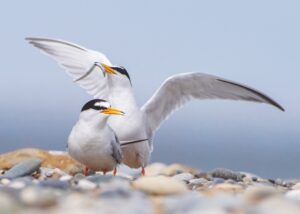
Little Terns.
Together with our partners at Fair Seas – a coalition of Ireland’s leading environmental NGOs and environmental networks of which BirdWatch Ireland is a founding member – we have been calling for the government to meet their targets, but this alone is not enough. More action must be taken in order for us to adequately protect these important marine habitats and the many species that they support. Any move to better protect important habitats for birds is to be welcomed, and this is certainly no different. We are urging the Irish government to be ambitious in their plans for this new SPA and stress the need for focused community engagement in the surrounding areas. We also continue our urgent calls for the publication of the long-awaited Marine Protected Areas (MPA) Bill.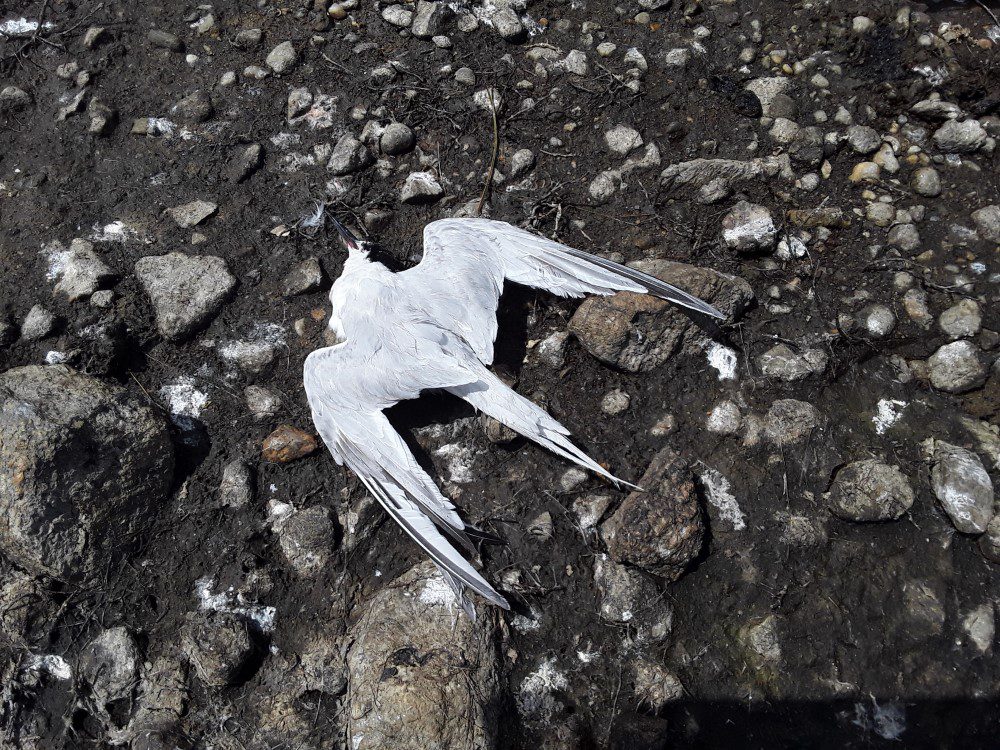
Bird ‘Flu Devastates Key Irish Seabird Colonies
BirdWatch Ireland staff have been dealing with alarming and unprecedented outbreaks of the highly pathogenic H5N1 strain of avian influenza, or bird ‘flu, at some of Ireland’s most important seabird colonies. Over the past few weeks, the carcasses of hundreds of dead seabirds, both adults and chicks, have been recovered for disposal, in an effort to try to prevent further spread of this highly contagious viral disease. There are fears for the long-term devastating consequences this outbreak may have on Ireland’s seabird populations, which are of international importance.
During the current nesting season, the hardest hit birds have been members of the tern family, a group of migratory seabirds which visit Ireland each summer to breed. All five of Ireland’s breeding tern species are ‘Amber-listed’ species of conservation concern, meaning that their populations were already been identified as being at risk before the current disease outbreak.



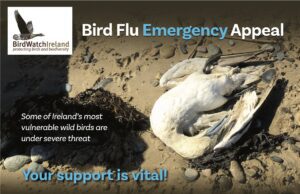
Please click here to donate to our Bird 'Flu Emergency Appeal
Last summer, seabird colonies across Ireland, Britain, Europe and other parts of the world were severely impacted by the same H5N1 strain of bird ‘flu, in what was the worst global outbreak of this disease in history. Populations of the Gannet, Ireland’s largest breeding seabird species, were particularly hard-hit: please click here for more details. Elsewhere in Europe, large numbers of terns perished at their nesting colonies. Our Irish tern colonies were not impacted last summer, but unfortunately it seems that their luck has run out this year. BirdWatch Ireland manages the four most important tern colonies in Ireland. Monitoring and conservation at Lady’s Island Lake (Wexford), Rockabill Island (Dublin) and Kilcoole Beach (Wicklow) is in conjunction with, and funded by, the National Parks and Wildlife Service, and our work on the Dublin Port Tern colony is funded by Dublin Port Company. Although it is still too early to assess the full impacts on populations, at the time of writing more than 160 adult Common Terns, along with over 450 Common Tern chicks, have been found dead at the breeding colony at Lady’s Island Lake, with the disease now also threatening the populations of Sandwich Terns and Roseate Terns that also nest there. The disease has probably spread from the earlier-nesting Black-headed Gulls also present at the same location, which hosts the species’ largest colony in Ireland.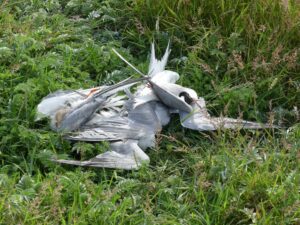
Dead terns at Lady's Island Lake, Co. Wexford: victims of bird 'flu (Photo: BirdWatch Ireland)
Lady’s Island Lake and Rockabill Island are home to the two largest mixed-species tern colonies in Ireland, with the latter holding 1,750 pairs of Roseate Terns. This means that it is, by far, the largest and most important breeding colony for this threatened species in all of Europe, holding approx. 60% of the European population. A large-scale outbreak of bird ‘flu in this colony would have disastrous repercussions for Roseate Terns at an international level. Since 1st July, a small number of adult Common Terns have been found dead or dying on Rockabill Island. Unfortunately, the carcasses sent to the Department of Agriculture, Food and the Marine for analysis have tested positive for bird ‘flu.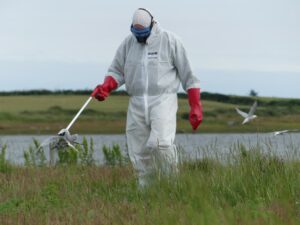
BirdWatch Ireland fieldworker wearing PPE, collecting bird 'flu victims (Photo: BirdWatch Ireland)
These outbreaks are very worrying for the future conservation of our tern species. A poor breeding season at a tern colony, with few chicks surviving, is unfortunate, but can be compensated for by better breeding success in subsequent years. However, the deaths of large numbers of adult terns of breeding age has a much bigger impact, and recovery will take a long time. BirdWatch Ireland will continue to monitor these outbreaks and remove carcasses, wherever it possible to do so safely. Experience from seabird colonies elsewhere in Europe last summer has shown that carcass removal is a key action to minimising the spread of avian influenza.*********************************
All of us at BirdWatch Ireland would like to extend our heartfelt thanks and appreciation to everyone who has donated to our Bird ‘Flu Emergency Appeal to date. The funds raised have been an enormous help in covering the cost of specialist personal protective equipment and training for our tern colony wardens. When faced with a crisis such as this one, we depend heavily on the generosity of our members and supporters, and your support has been vital in minimising the impacts of this terrible disease and keeping our wardens safe. If you wish to donate to BirdWatch Ireland's Bird ‘Flu Emergency Appeal, please click here.*********************************
We would like to remind the public not to touch any sick or dead seabirds, but to report them via BirdTrack and the Department of Agriculture’s ‘Avian Check’ web page.
If you own chickens or other poultry then please consult the Department of Agriculture website for further advice.
